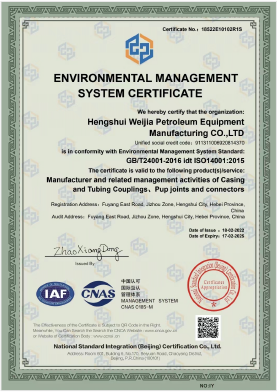Casing Threads and Couplings - Comprehensive Guide
Understanding Casing Threads and Couplings in Oil and Gas Drilling
Casing threads and couplings play a vital role in the oil and gas industry, particularly in the drilling process. These components are essential for the structural integrity and functionality of the casing, which is used to line the borehole after drilling. The primary purpose of casing is to prevent the collapse of the wellbore and to isolate different underground formations from one another.
Casing Threads Casing threads refer to the specialized helical grooves that are machined on the ends of casing pipes. These threads allow for the connection of two or more casing pipes, facilitating their assembly into a longer string that can withstand the pressures experienced during drilling operations. The design of these threads is critical, as it must ensure a tight seal to prevent fluid leakage and protect the downhole environment.
There are several types of casing thread designs, including API (American Petroleum Institute) threads, premium threads, and tapered threads. API threads are standardized and widely used across the industry due to their reliability and ease of manufacture. However, as drilling environments become more complex and challenging, premium threads, which offer enhanced sealing and load-bearing capabilities, are increasingly utilized. These premium threads often feature advanced designs that improve performance in high-pressure and high-temperature applications.
casing threads and couplings

Couplings Couplings are the fittings that connect individual sections of casing together. They can be considered as the link in the casing string, allowing for the extension of the wellbore casing. Couplings can be either welded or threaded, with threaded connections being more common in the oil and gas industry. The choice of coupling design also depends on the specific application and environmental conditions of the well.
In addition to their role in connecting casing pipes, couplings are also designed to withstand significant mechanical stresses and forces. They must be resilient enough to endure the various stresses encountered during drilling operations, including tension, compression, and torsion. Therefore, materials used in the manufacturing of casing threads and couplings are selected for their strength, durability, and resistance to corrosion.
Conclusion In summary, casing threads and couplings are crucial components in the oil and gas drilling process, ensuring the stability and integrity of wellbores. With advancements in technology, the design and manufacturing of these components continue to evolve, providing enhanced performance and safety in increasingly demanding drilling environments. Understanding the importance of casing threads and couplings is essential for anyone involved in the oil and gas industry, as they are fundamental to successful drilling operations.
-
Unlock the Benefits of Pup Joints for Your OperationsNewsOct.31,2024
-
The Quality of Casing Couplings from ChinaNewsOct.31,2024
-
The Essential Role of Pup Joints in Drilling OperationsNewsOct.31,2024
-
The Benefits of Tubing Couplings for Your ProjectsNewsOct.31,2024
-
Enhance Your Drilling Operations with Tubing Pup JointsNewsOct.31,2024
-
Elevate Your Drilling Operations with Tubing CrossoversNewsOct.31,2024







